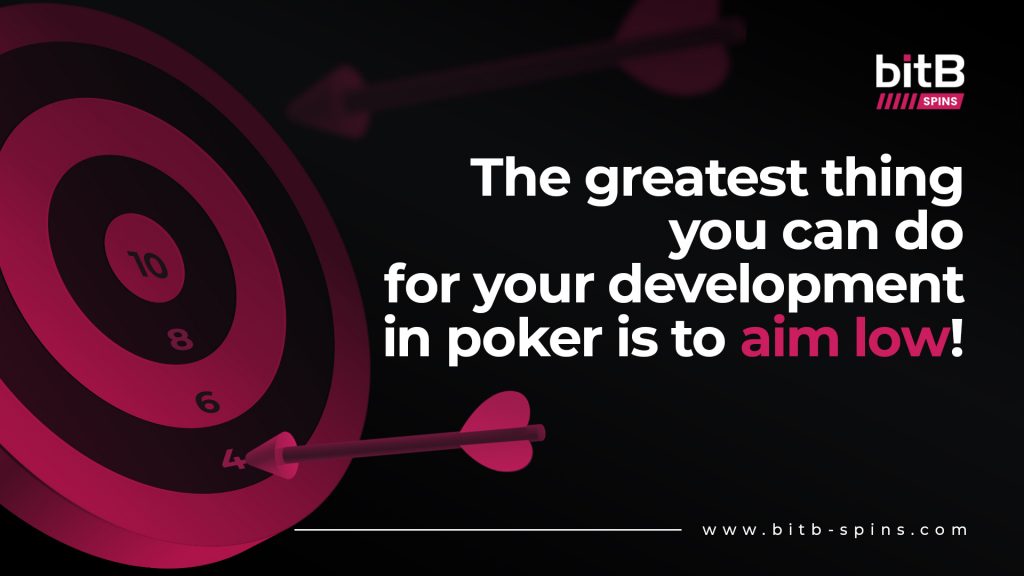The greatest thing you can do for your development in poker is to aim low!
Aim low? It sounds silly, but at least it’s a bold statement in a world where we are told from all sides that the only way is to set ourselves big dreams and goals. Those who make these claims typically paint a grand vision of the future, full of positive sentiment, but leave out the crucial part of the formula: concrete action. Of course, they do because these things drag us back to dull reality, which is a way harder sell than a dreamy (although most likely impossible) future. If you think you’ve had enough of dreaming and want to get down to the business of making things happen, we’ve got some tips on how to do it.
Realistic goals
Of course, it’s great to dream of playing three times as many Spin&Go games next month, with at least twice the ROI but put your hand on your heart. What are the realistic chances of achieving these? If you don’t see any, don’t be discouraged, just set goals that will help you to really move your poker career forward and not just daydream.
As a first step, the concept of Type I and Type II thinking, developed by Israeli psychologist and economist Daniel Kahneman, can help a lot.
Type I could also be called intuition, a quick decision based on the emotions felt at the moment. This type of thinking is exploited in grocery stores with sweets strategically placed near the checkout. A good proportion of shoppers probably didn’t intend to buy chocolate in the store but will buy it anyway because of a split-second decision based on emotions.
Type II thinking, on the other hand, is a process of looking at the pros and cons of a decision and really thinking it through.
So, when you say you’ve played 1500 games so far, but you’re going to play 2500 next month, that’s a Type I thought because there’s no logical explanation for why (and how) you’d play almost twice as many games as you had. On the other hand, if you think carefully and perhaps ask for help about the right direction for you and apply some self-awareness, you can set yourself on a trajectory of progress that could end up with you achieving goals that currently seem unrealistic.
What should I do then?
Once you realize that your “goals” may have been dreams, bitB’s system helps you to set new, genuine, and achievable goals. It’s a good idea to take stock of where you are now and perhaps ask for help to identify areas where you need to improve.
When you know where you want to go, it’s worth applying the “25% rule”. To take the example mentioned earlier, someone who has played 1500 games a month so far but now wants to play 2500, so 1000 more take 25% of that, which means 250 more games in the first month (1750). Many people say: ‘But that’s not enough!’. Indeed, it may not be enough (at least for the time being), but it is at least a feasible target.
In many cases, when someone sets an over-ambitious goal, the huge gap between where they are and where they want to be, simply destroys their motivation and they may not even be able to play 1500 games. The 25% rule also helps to prevent this. By applying this strategy, you can stay motivated without being overwhelmed by the burden of an unrealistic goal, plus you can play/analyze/learn more and more every month.
bitB Spins Community
How can you take advantage of the above? In our 30-day commitment-free trial period a Player Manager with vast amount of experience in guiding poker players will help you find the best way to improve your spin game. In addition to that you will find yourself in a community of like-minded people, many of whom are further along in their poker careers than you, so you can ask them what realistic goals are for your level and brainstorm with them about what might be the right path for you.
And the best part? You have no commitment, if you try it and it’s not for you, then that’s it, no strings attached! If you like it on the other hand, depending on your performance, you might be able to join our stable and further improve your game.

